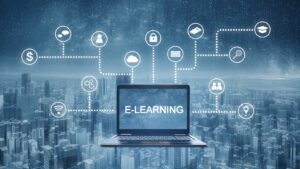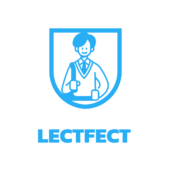Educational technology, often referred to as EdTech, is a rapidly evolving field that leverages digital tools and resources to enhance teaching and learning experiences. It encompasses a wide range of technologies, from interactive whiteboards and educational apps to virtual reality simulations and online learning platforms.
What Is Educational Technology? Listlifes.Com
Definitions and Scope
 Educational Technology, often referred to as EdTech, encompasses the use of digital tools and resources to support teaching and learning processes. It includes a wide array of technologies such as interactive whiteboards, educational apps, video conferencing tools, and virtual reality simulations. The main goal of EdTech is to enhance educational outcomes by providing innovative ways to deliver and engage with educational content.
Educational Technology, often referred to as EdTech, encompasses the use of digital tools and resources to support teaching and learning processes. It includes a wide array of technologies such as interactive whiteboards, educational apps, video conferencing tools, and virtual reality simulations. The main goal of EdTech is to enhance educational outcomes by providing innovative ways to deliver and engage with educational content.
History and Evolution
Over the years, Educational Technology has evolved significantly, adapting to the changing landscape of education. Its roots can be traced back to the introduction of early teaching machines in the 1920s. Since then, EdTech has continually progressed, incorporating advancements in computing, multimedia, and internet technologies.
The evolution of Educational Technology has revolutionized traditional teaching methodologies, making learning more interactive and personalized. With the integration of EdTech in both physical classrooms and online learning environments, educators can now create dynamic and engaging lessons that cater to diverse learning styles. This continual evolution signifies a shift towards a more tech-savvy and interconnected educational ecosystem.
Components of Educational Technology
Hardware and Software in Education
 Educational Technology encompasses various components, with hardware and software playing pivotal roles in transforming teaching and learning experiences. The hardware component involves physical devices like computers, tablets, interactive whiteboards, and virtual reality headsets. These tools enable educators to deliver content effectively, engage students through interactive lessons, and create immersive learning environments. On the other hand, software refers to the programs, applications, and digital resources used to support educational activities. Learning management systems, educational apps, simulation software, and multimedia tools are examples of software applications that enhance instructional delivery, facilitate assessment, and cater to individual learning needs. The seamless integration of hardware and software in education is essential for creating dynamic and engaging learning experiences.
Educational Technology encompasses various components, with hardware and software playing pivotal roles in transforming teaching and learning experiences. The hardware component involves physical devices like computers, tablets, interactive whiteboards, and virtual reality headsets. These tools enable educators to deliver content effectively, engage students through interactive lessons, and create immersive learning environments. On the other hand, software refers to the programs, applications, and digital resources used to support educational activities. Learning management systems, educational apps, simulation software, and multimedia tools are examples of software applications that enhance instructional delivery, facilitate assessment, and cater to individual learning needs. The seamless integration of hardware and software in education is essential for creating dynamic and engaging learning experiences.
The Role of the Internet and Digital Media
The Internet and digital media play a fundamental role in advancing Educational Technology and reshaping modern education practices. Access to the Internet provides a vast repository of resources for research, collaboration, and knowledge sharing. Online platforms, digital libraries, and educational websites offer a diverse range of multimedia content, academic materials, and interactive tools that enrich the learning process. Digital media, including videos, animations, podcasts, and e-books, are valuable resources for delivering content in engaging and interactive formats. These media formats cater to different learning preferences, enhance information retention, and promote active participation in educational activities. The integration of the Internet and digital media in educational settings fosters a dynamic learning environment that embraces innovation and fosters collaboration among students and educators.
Benefits of Educational Technology
Enhancing Learning Experiences
 Educational Technology enhances learning experiences by offering interactive and personalized content delivery. It allows educators to create engaging lessons through multimedia elements, simulations, and virtual reality, catering to diverse learning styles. For instance, virtual labs enable students to conduct experiments in a digital environment, enhancing their understanding of complex scientific concepts. By providing immediate feedback and adaptive learning pathways, EdTech helps students grasp challenging material more effectively, fostering a deeper level of comprehension.
Educational Technology enhances learning experiences by offering interactive and personalized content delivery. It allows educators to create engaging lessons through multimedia elements, simulations, and virtual reality, catering to diverse learning styles. For instance, virtual labs enable students to conduct experiments in a digital environment, enhancing their understanding of complex scientific concepts. By providing immediate feedback and adaptive learning pathways, EdTech helps students grasp challenging material more effectively, fostering a deeper level of comprehension.
Access and Inclusion
Educational Technology promotes access and inclusion by breaking geographical barriers and providing learning opportunities to a broader audience. Through online courses and virtual classrooms, students from remote or underprivileged areas can access quality education without the need for physical presence. Additionally, EdTech tools offer accommodations for students with disabilities, such as screen readers and speech-to-text software, ensuring that all learners have equal opportunities to succeed. This inclusive approach fosters a supportive learning environment where every individual can participate and thrive academically.

